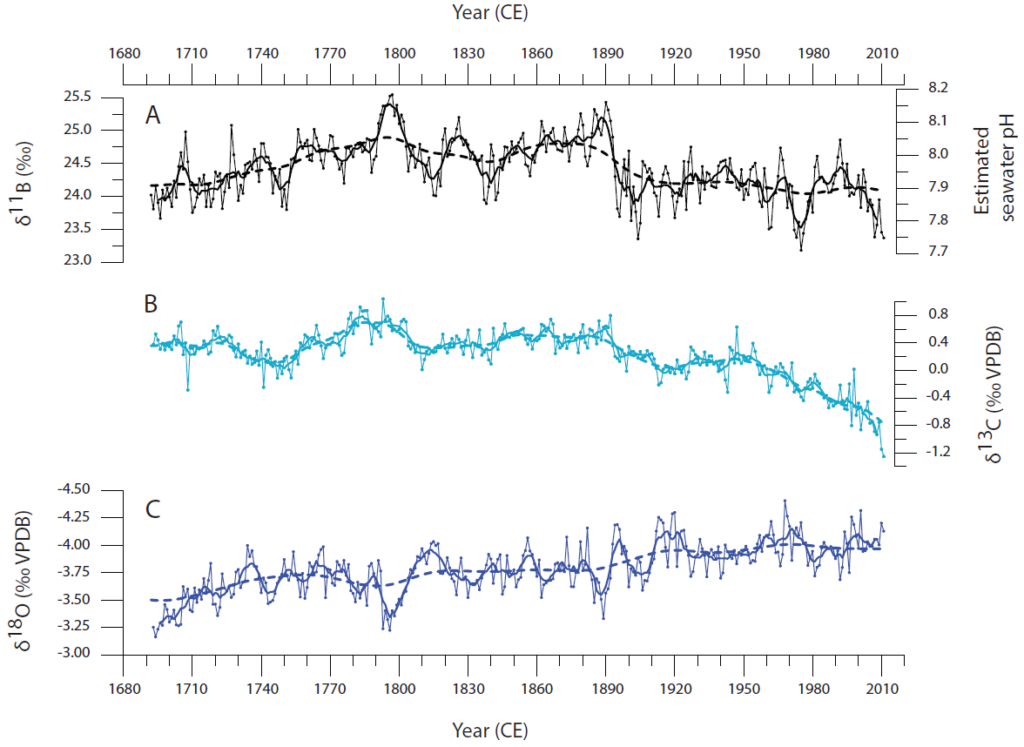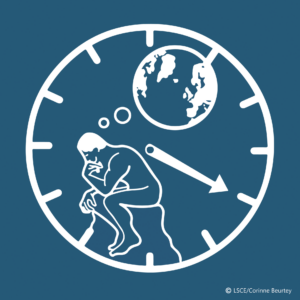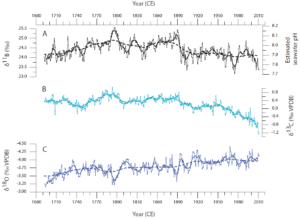L’augmentation du CO2 atmosphérique due au changement climatique provoqué par l’homme réduit le pH des océans de surface. En raison du nombre limité de mesures instrumentales et d’enregistrements historiques du pH dans les océans du monde, la variabilité du pH de l’eau de mer à l’échelle décennale et centennale reste largement inconnue et nécessite d’être documentée. Nous présentons ici des preuves de tendances séculaires frappantes de diminution du pH depuis la fin du 19ème siècle avec une variabilité prononcée du pH interannuelle à inter-décennale dans l’océan Pacifique Sud de 1689 à 2011 CE.
Les changements de pH océanique de grande amplitude, probablement liés à l’absorption de CO2 atmosphérique et aux fluctuations du carbone inorganique dissous dans l’eau de mer, révèlent une relation couplée avec les variations de la température de surface de la mer et mettent en évidence l’influence marquée d’El Niño/Oscillation australe et de l’Oscillation inter-décennale du Pacifique. Nous suggérons que l’évolution de la force des vents de surface et les processus d’advection zonale sont les principaux facteurs responsables de la variabilité régionale du pH jusqu’en 1881 CE, suivis par le rôle prépondérant du CO2 anthropique dans l’accélération du processus d’acidification des océans.
Référence : Wu H.C., Dissard D., Douville E., Blamart D., Bordier L., Tribollet A., Le Cornec F., Pons-Branchu E., Dapoigny A., and Lazareth C., 2018. Surface ocean pH variations since 1689 CE and recent ocean acidification in the tropical south Pacific. Nature communications 9, 2543. Doi: 10.1038/s41467-018-04922-1
Projets : AO-IPSL-2014; ANR-Labex L-IPSL (Henry Wu – Post-doctorat de 24 mois) & ANR CARBORIC



